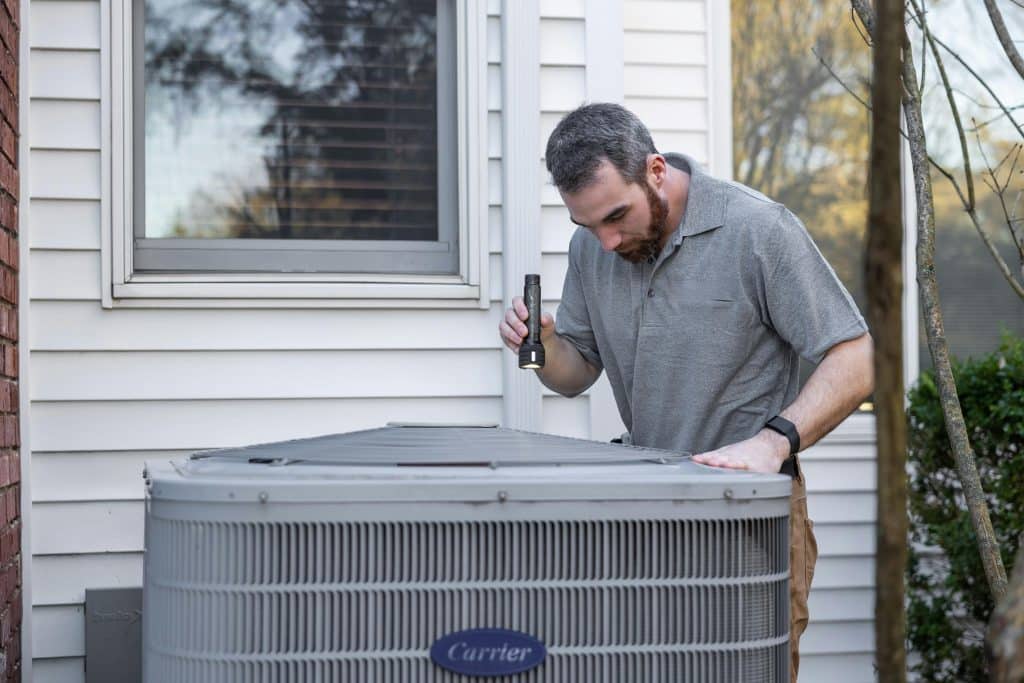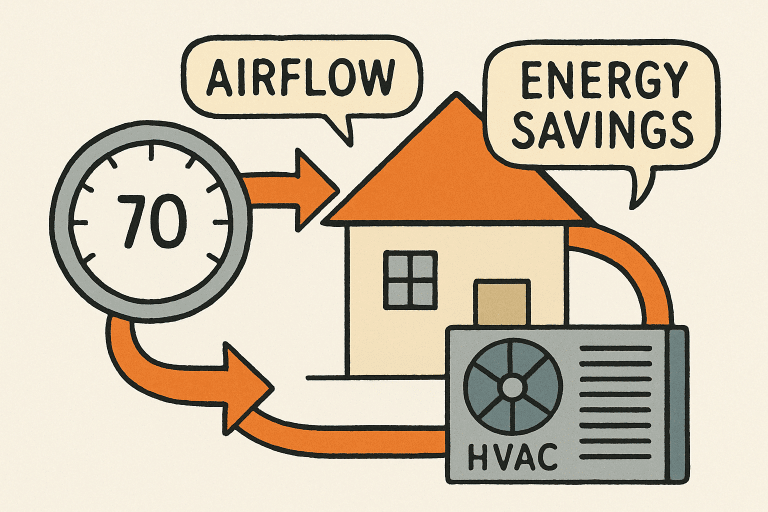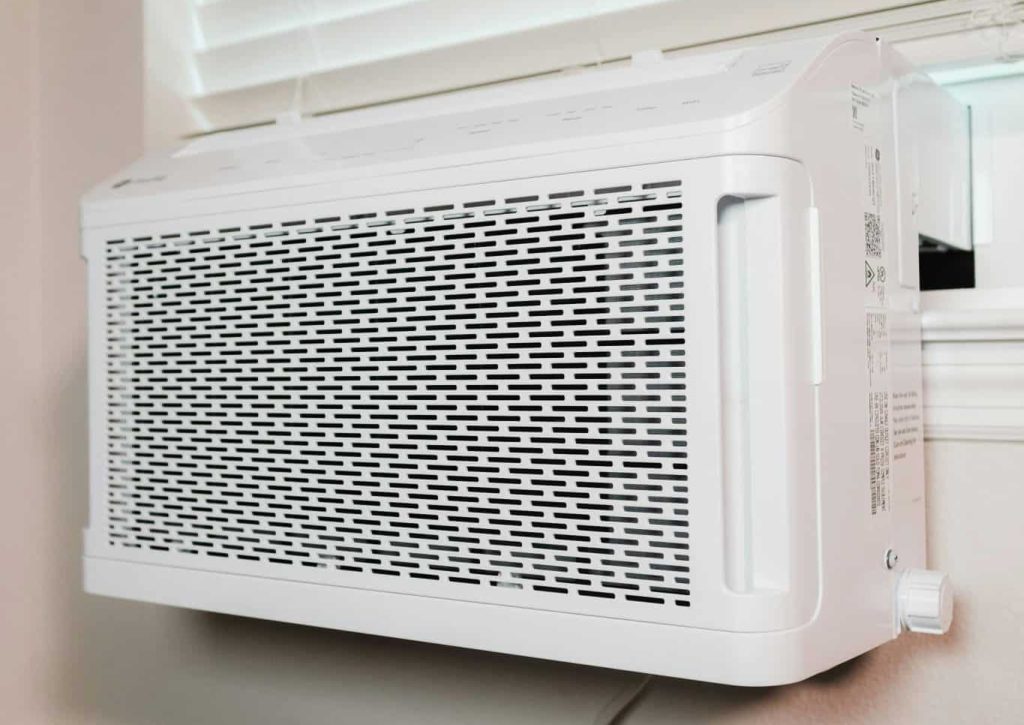Key Takeaways
- Regular HVAC maintenance and filter changes maintain efficiency and avoid energy waste.
- Smart thermostats and upgraded, energy-efficient systems reduce utility bills substantially.
- Effective insulation and sealing air leaks keep conditioned air inside and reduce energy costs.
- Ceiling fans, zoning systems, and passive techniques enhance comfort while minimizing HVAC workload.
Table of Contents
- Introduction
- Regular Maintenance and Filter Replacement
- Upgrade to Smart Thermostats
- Enhance Home Insulation and Seal Air Leaks
- Utilize Ceiling Fans for Better Air Circulation
- Implement Zoning Systems
- Consider Energy-Efficient Equipment Upgrades
- Schedule Professional Energy Audits
- Adopt Passive Heating and Cooling Techniques
Introduction
With energy prices rising, every homeowner is looking for reliable ways to keep utility bills reasonable without sacrificing indoor comfort. Your heating, ventilation, and air conditioning (HVAC) system is one of the most significant contributors to household energy consumption. Adopting innovative strategies can help you achieve a more efficient home and save money all year. Whether planning a professional AC tune up King of Prussia or making DIY improvements, every positive step makes a big difference for your wallet and energy footprint.
Properly managed HVAC systems operate more efficiently and last longer, which means fewer costly repairs and replacements down the line. Simple actions like staying current with maintenance and upgrading outdated equipment are top ways to protect your investment and lower monthly costs. With a few innovative changes, you can maximize comfort and cut waste year-round.
Regular Maintenance and Filter Replacement

Scheduled tune-ups are fundamental to keeping HVAC systems functioning optimally. Dust and debris can accumulate without consistent maintenance, causing components to work harder and reducing system lifespan. It’s recommended to schedule HVAC check-ups at least twice yearly, ideally in the spring and fall before the most demanding seasons. Professional technicians can spot problems early, clean critical parts, and help you avoid unexpected breakdowns.
Equally important is replacing or cleaning air filters every one to three months, depending on your usage and local air quality. Clogged filters restrict airflow, driving energy consumption and negatively impacting air quality. According to the U.S. Department of Energy, a clean filter can lower your system’s energy use by 5% to 15%, helping you save money while protecting the air your family breathes. Consider guidance from credible sources such as ENERGY STAR’s Maintenance Checklist for tips on creating a practical HVAC maintenance checklist.
Upgrade to Smart Thermostats
Smart thermostats are an efficient way to cut HVAC costs and take control of your environment. These devices adapt to your lifestyle patterns, adjusting the temperature automatically when you’re asleep or away for the day. Many models allow you to control your HVAC remotely through a smartphone, so you’ll never have to worry about leaving the air conditioner or heater running when you’re out.
Studies show that smart thermostats can lower energy costs by up to 10-15% annually while maintaining your preferred comfort level. They can also track energy use over time, providing actionable insights into how to save even more. Installing one is a relatively affordable upgrade with a quick return on investment.
Enhance Home Insulation and Seal Air Leaks
Heat escaping through cracks and poor insulation can make any HVAC system less efficient. Ensuring your attic, exterior walls, and basement are well-insulated prevents heat transfer, keeping your home warm in winter and cool during summer. Inspect your home annually for air leaks around doors, windows, electrical outlets, and ductwork.
According to the Environmental Protection Agency, simple solutions like adding weatherstripping, caulking gaps, and upgrading insulation can yield immediate savings, up to 20% on costs. These improvements pay for themselves quickly, not to mention the comfort boost throughout your home.
Utilize Ceiling Fans for Better Air Circulation
Ceiling fans are effective allies in managing comfort and reducing HVAC wear. In summer, set ceiling fans to spin counterclockwise, creating a gentle wind chill effect to raise the thermostat several degrees without losing comfort. In colder months, reverse the direction (clockwise) to push warm air downward, making your heating more effective.
This simple adjustment means your HVAC will work less to maintain comfort, further extending equipment life and lowering costs. Fans are a low-energy way to optimize indoor temperatures year-round.
Implement Zoning Systems
Zoning divides your home into designated areas, each managed by its thermostat. This system is highly effective for homes with unused rooms or multiple stories. Instead of uniformly heating or cooling the whole house, zoning allows targeted comfort where and when you need it. Not only does this approach minimize waste, but it also solves temperature disparities, which is a common problem in larger homes.
Benefits of Home Zoning
- Personalized settings for different spaces (bedrooms, living rooms, basements, etc.)
- Lower costs by conditioning only occupied zones
- Reduces overall stress on your HVAC, promoting longer equipment life
Consider Energy-Efficient Equipment Upgrades
Older HVAC systems, especially those over a decade old, often lack energy-efficient technology. Today’s high-efficiency models, such as ENERGY STAR®-certified heat pumps, air conditioners, and furnaces, can reduce utility costs by 20-40% while improving air quality and comfort. Consider additional features like variable-speed motors and advanced filtration systems when replacing your unit. While there’s an initial investment, the ongoing savings and improved performance quickly justify the upgrade.
Schedule Professional Energy Audits
A professional energy audit is a comprehensive assessment that pinpoints specific areas where your home loses heat or cooled air. Trained auditors may use tools like blower doors and infrared cameras to diagnose inefficiencies, offering recommendations that deliver the best possible returns on your home improvement budget. Many local utility providers offer audits at reduced rates or even for free. For more information, refer to the U.S. Department of Energy’s guide on Home Energy Audits.
Adopt Passive Heating and Cooling Techniques
Passive strategies use natural resources to regulate your home’s comfort. Properly positioned windows, landscaping for shade, and reflective window coverings can reduce solar heat gain in summer. Opening windows or cross-ventilating during cool evenings helps decrease indoor temperatures without relying on air conditioning. Similarly, letting in sunlight on winter days naturally warms up living spaces.
Examples of Passive Techniques
- Install thermal curtains or blinds to manage heat loss or gain
- Plant trees to shade windows and exterior walls
- Take advantage of architectural features like overhangs and window orientation.
Innovative HVAC management blends everyday habits, smart devices, and professional help. By taking small steps and making long-term upgrades, you’ll enjoy lower bills, greater comfort, and a healthier home for years.









